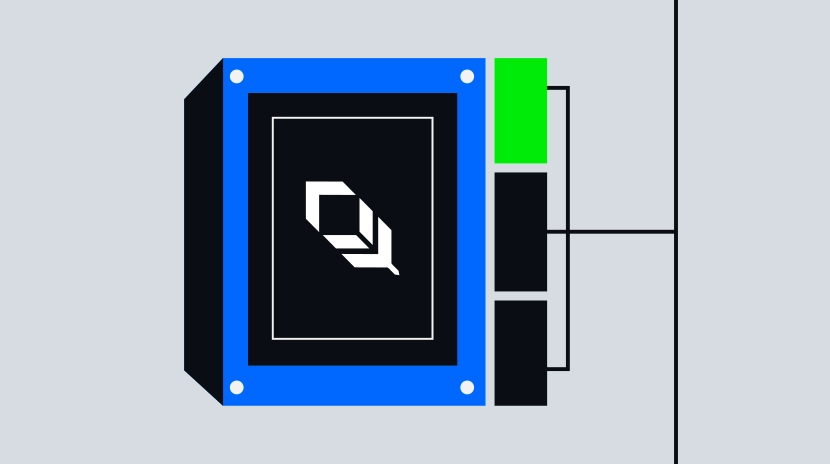opbnb

OPBNB is a layer 2 scaling solution for Binance Smart Chain (BSC), employing Optimistic Rollup technology to enhance transaction processing capacity and reduce network fees. As a critical scaling solution within the BSC ecosystem, OPBNB maintains full compatibility with BSC while significantly improving on-chain transaction efficiency. Launched by the Binance team in 2023, it provides developers of decentralized applications (DApps) with a more cost-effective infrastructure, particularly suited for high-frequency transaction scenarios such as GameFi, DeFi, and NFTs. With its low-cost, high-throughput characteristics, OPBNB has become a core component of Binance's ecosystem expansion strategy.
Background: The Origin of OPBNB
OPBNB emerged from Binance's strategic efforts to address the blockchain scalability trilemma (scalability, decentralization, and security). As BSC network usage surged, user experience began to suffer from transaction delays and rising fees, prompting the Binance team to adopt a layered scaling strategy.
In the second quarter of 2023, Binance officially announced the launch of the OPBNB project, applying the Optimistic Rollup technology developed by the Optimism team to the BSC ecosystem. The project first underwent testnet deployment and, after multiple rounds of security audits, officially launched on the mainnet in September 2023.
As an extension layer of BSC, OPBNB inherits the advantages of the Binance ecosystem while also representing Binance's significant exploration into multi-layer blockchain architecture. OPBNB is not only a product of technological evolution but also a strategic initiative by Binance to address market competition and enhance ecosystem competitiveness.
Work Mechanism: How OPBNB Operates
OPBNB is built on Optimistic Rollup technology, and its core operating principles include:
-
Transaction batching: OPBNB bundles multiple transactions together, creates batch transaction data, and submits only the cryptographic proofs of this data to the BSC mainchain (layer 1), rather than the complete transaction details.
-
Fraud proof system: OPBNB adopts an "optimistic" assumption that all submitted transactions are valid, then establishes a challenge period (approximately 7 days) allowing validators to submit fraud proofs if invalid transactions are detected.
-
State root updates: After verifying batched transactions, OPBNB nodes calculate a new state root and submit it to smart contracts on the BSC mainchain, completing data synchronization.
-
Bridge mechanism: Users can transfer assets between BSC and OPBNB through bridge contracts, which lock assets on BSC and mint equivalent tokens on OPBNB, and vice versa.
-
Sequencer role: OPBNB uses sequencer nodes to process transaction order and build batches, currently operated by Binance officially, with plans for gradual decentralization in the future.
OPBNB shares its security model with BSC, inheriting the underlying blockchain's security guarantees while achieving transaction processing capabilities of up to 4000+ TPS through data compression and batch processing mechanisms, significantly reducing transaction fees.
Risks and Challenges of OPBNB
Despite its numerous advantages, OPBNB faces several noteworthy risks and challenges:
-
Centralization risk: At the current stage, OPBNB sequencer nodes are primarily controlled by Binance, presenting centralization concerns that could affect the network's censorship resistance.
-
Security verification cycle: Optimistic Rollup technology requires a lengthy challenge period (typically 7 days) to ensure transaction finality, resulting in time delays for cross-chain fund withdrawals.
-
Technological maturity: As a relatively new scaling solution, OPBNB has not yet been tested by the market over an extended period and may contain undiscovered technical vulnerabilities.
-
Uneven ecosystem development: Although OPBNB provides the technical infrastructure, developer and user migration takes time, potentially facing the issue of an insufficiently rich ecosystem in its early stages.
-
Cross-chain risk: The bridging process for assets between BSC and OPBNB involves smart contract risks, with several blockchain bridges having experienced major security incidents historically.
-
Competitive pressure: As other public chains also launch their own layer 2 solutions, OPBNB needs to continuously innovate in terms of features and user experience to maintain competitiveness.
The OPBNB team is addressing these challenges through continuous technical iteration, security audits, and ecosystem building, while also planning for the gradual implementation of greater decentralization.
OPBNB represents an important direction in blockchain scaling technology, providing substantial performance improvements for the Binance ecosystem. As a layer 2 solution for BSC, it has successfully maintained security while significantly reducing transaction costs for users and developers, enabling more complex application scenarios. As the Web3 industry continues to evolve, OPBNB's value is primarily reflected in paving the way for large-scale blockchain application adoption, especially in high-frequency transaction areas such as gaming and social applications. Although there is room for optimization in its technical approach and level of decentralization, OPBNB has become an important bridge connecting existing blockchain infrastructure with future large-scale application needs, demonstrating the development path of blockchain technology achieving scalability through layered architecture.
Share
Related Articles

Exploration of the Layer2 Solution: zkLink

What is Plume Network
